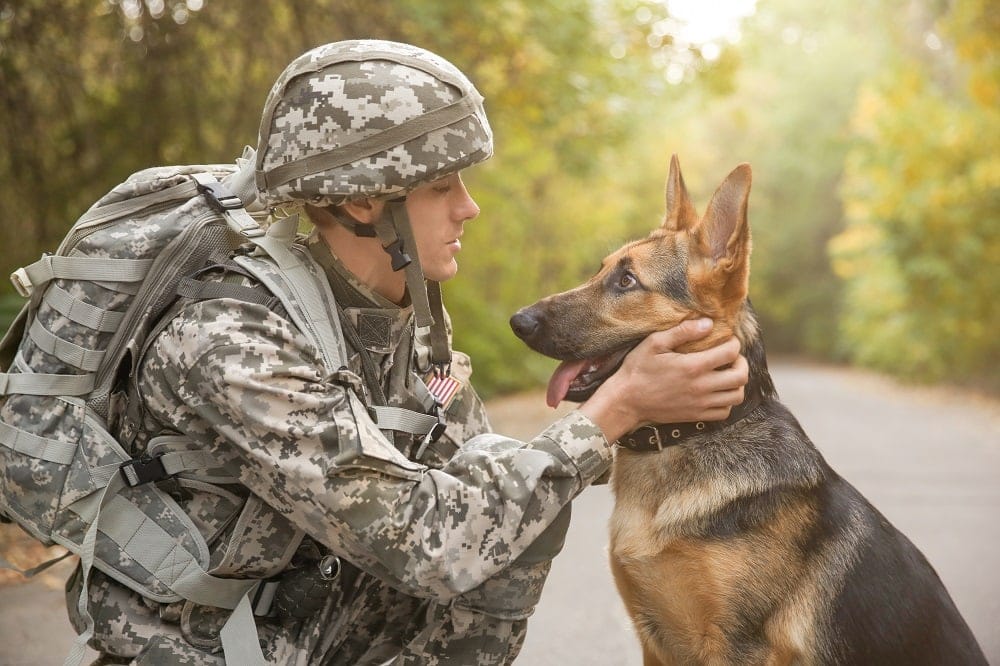For most people, part of every year involves buying extra tissues as the nose starts to alternate between running and stuffing up and sneezes become a regular occurrence. But allergies affect more than just humans. In fact, many of the same things that cause allergies in people can cause allergies in dogs too. So, if you notice your dog frequently sneezing, they’re probably suffering from allergies just like you.
Of course, you don’t want your dog to needlessly suffer, and you want to make sure they’re really suffering from allergies and not an undiagnosed underlying disease. Therefore, you need to understand what allergies look like in dogs, what causes them, and how to treat them. In this article, we cover all these important topics so you’re prepared to deal with your dog’s allergies whenever they arise.
What Are Allergies in Dogs?
Allergies are reactions caused by certain substances known as allergens. Allergens come in many forms, most often produced by plants, animals, insects, or foods. Continued exposure to an allergen causes a sensitivity to it in the immune system, resulting in an overreaction when the same allergen is introduced again in the future.

Three Types of Allergies in Dogs
Dogs can have allergies in three main varieties, depending on what caused the reaction. Unfortunately, sometimes the signs that these types of allergies present can overlap, making it more difficult to pinpoint a specific cause.
Food Allergies
Food allergies aren’t as common as many dog owners believe. You’ll often hear people talking about their dog’s food allergies, but generally, these are sensitivities and not allergies. There’s no immune response to a food intolerance like there is with a true food allergy. Instead, a food tolerance creates a gradual reaction. A food allergy can result in vomiting, diarrhea, skin rashes, and infections of the ear or foot.
Skin Allergies
A skin allergy is also known as allergic dermatitis, and this is the most common allergic reaction in dogs. Ironically, skin allergies can be caused by food and environmental allergens, which makes it difficult to know when you’re dealing with a true skin allergy or just clinical signs from another type of allergy.
Skin allergies can also be caused by flea allergy dermatitis, which is an allergic reaction caused by flea saliva. The bites from fleas will make these dogs itchy, with signs of skin rash. Environmental allergens can also result in atopic dermatitis.
Environmental Allergies
Usually, environmental allergies are seasonal. This category includes things like dust and pollen allergens, which cause allergic reactions in many humans and dogs.

What Is an Acute Allergic Reaction?
This is often the most worrisome type of allergic reaction. This severe and immediate reaction can become fatal if treatment is not administered quickly. Similar to humans, dogs can go into anaphylactic shock in such situations, though this is rather rare with canines. Sometimes, this type of reaction is caused by routine vaccinations or insect stings like bees. If one happens to a dog, you’ll probably notice swelling of the face, eyes, and lips, just like you might see in a person. A vet can treat this with antihistamines, and it’s rarely fatal.
Common Allergy Signs in Dogs
Many of the common allergy signs that dogs present can be caused by any of the three types of allergies that dogs can suffer from. This makes it challenging to diagnose the particular cause of the allergy, though it’s relatively easy to pick out the signs of allergies in general. That said, a few of these signs can also present from other conditions that aren’t related to allergies at all, so you’ll want to get a vet’s opinion for a proper diagnosis.

- Sneezing
- Runny eyes
- Itchiness
- Ear infections
- Vomiting
- Excessive licking
- Red skin
- Swelling around the face
- Hives
- Diarrhea
How to Diagnose Allergies in Dogs
Since many of the allergy signs in dogs are similar to those that they might present for other conditions, you’ll want to get a professional prognosis if you think that your dog has allergies. A veterinarian can test for specific allergies, rather than you simply guessing. Granted, these tests aren’t always accurate, and it can still be difficult to pinpoint a cause. That said, some allergies are easier to identify than others, such as flea allergy dermatitis, which is considered the easiest to diagnose.

Treatments for Allergies in Dogs
Several treatments are available for dogs with allergies, and the one that your dog needs depends on what is causing their allergies. For example, a flea shampoo might solve allergic reactions to flea allergy dermatitis by killing off the fleas, though this wouldn’t do anything for a food allergy. Once your veterinarian diagnoses your dog’s allergies, they can suggest a method of treatment that will be effective for the specific allergies that your dog is experiencing. For instance, food allergies might require a change in diet. Other allergies might simply require you to administer allergy relief medication to your dog regularly.
Final Thoughts
Allergies are incredibly common in canines, and there’s no reason to worry if your dog is experiencing allergy signs like sneezing, runny eyes, itchiness, and rashes. Usually, these conditions aren’t serious and they can be treated quite easily. However, you’ll want to get your vet’s opinion first to make sure it’s really allergies that your dog is suffering from and not an underlying condition that’s undiagnosed. Once allergies are determined to be the problem, your vet can suggest a treatment path to help alleviate the clinical signs and get your dog back to full health.
See also:
- Congestive Heart Failure in Dogs: Causes, Symptoms, Treatment
- 18 Fruits & Vegetables Dogs Can Eat (With Infographic)
Featured Image Credit: MeHe, Pixabay










